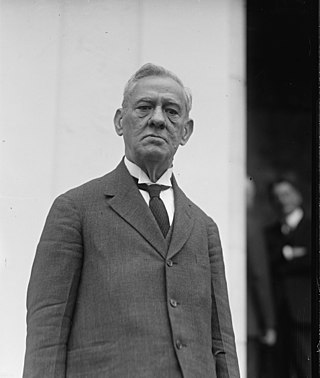
Alfredo de Zayas y Alfonso, usually known as Alfredo de Zayas under Spanish naming customs and also known as Alfredo Zayas, was a Cuban lawyer, poet and political figure. He served as prosecutor, judge, mayor of Havana, secretary of the Constitutional Convention, senator in 1905, president of the Senate in 1906, Vice President of Cuba from 1909 to 1913 and President of Cuba from May 20, 1921, to May 20, 1925.

Rolando Arcadio Masferrer Rojas, better known simply as Rolando Masferrer, was a Cuban henchman, lawyer, congressman, newspaper publisher and a political activist.
Pico Turquino, sometimes erroneously spelled as Pico Torquino, is the highest point in Cuba. It is located in the southeast part of the island, in the Sierra Maestra mountain range in the municipality of Guamá, Santiago de Cuba Province. It is the only place in Cuba where snowfall has been officially recorded, which last fell in February 1900.

Manzanillo is a municipality and city in the Granma Province of Cuba. By population, it is the 14th-largest Cuban city and the most populated one not being a provincial seat.
At the time of first contact between Europe and the Americas, the Indigenous peoples of the Caribbean included the Taíno of the northern Lesser Antilles, most of the Greater Antilles and the Bahamas, the Kalinago of the Lesser Antilles, the Ciguayo and Macorix of parts of Hispaniola, and the Guanahatabey of western Cuba. The Kalinago have maintained an identity as an Indigenous people, with a reserved territory in Dominica.
During the Cuban revolution, escopeteros were essential scouts and pickets from the Sierra Maestra and other mountain ranges to the plains. The "escopeteros" were responsible for semi-continuously holding terrain against smaller sized Batista patrols. The escopeteros provided first alerts, communications, protected supply routes, provided essential intelligence and often captured weapons which were sent up to the mainline Castro forces in the high mountains.
Guamá was a Taíno rebel chief who led a rebellion against Spanish rule in Cuba in the 1530s. Legend states that Guamá was first warned about the Spanish conquistador by Hatuey, a Taíno cacique from the island of Hispaniola.
Fernando Ramón Martínez Heredia was a prominent Cuban revolutionary thinker and politician. Martínez was a founding member of the Cuban Communist Party, and as a member of the July 26 Movement, he took part in the Revolution which overthrow the Batista dictatorship.
José María Vitier is a Cuban music composer and pianist. He has made music for movies and television, as well as compositions for piano, symphonic orchestra, chamber orchestra, among other formats. His style often combines the classical and Cuban folk music styles. Some of his most remarkable works are his compositions for the Cuban film Fresa y Chocolate, and his Cuban mass.

Buey Arriba is a mountainous municipality and town in the Granma Province of Cuba. It is located in the northern part of the Sierra Maestra, 30 kilometres (19 mi) south of Bayamo, the provincial capital.

Candelaria Figueredo was a Cuban patriot who fought in the Cuban struggle for independence from Spain.

Manuel A. Iturralde-Vinent, is a Cuban geologist and paleontologist and former deputy director of the Cuban National Natural History Museum in Havana. He is a scientific personality in Cuba and the Caribbean and President of the Cuban Geological Society for 2007-2016.

Clara (Cuqui) Nicola was a prominent Cuban guitarist and professor.

El Cobre is a Cuban town and consejo popular of the municipality of Santiago de Cuba, capital of the homonym province, with a population of about 7,000. Mainly known for a Basilica in honour of Our Lady of Charity, the patron saint of Cuba, it was until recently the site of a large copper mine worked by slaves, free coloured people, and for a while by miners from Cornwall.

Uvero, also known as El Uvero, is a Cuban village and consejo popular of the municipality of Guamá, in Santiago de Cuba Province. In 2011 it had a population of 2,581.
Manuel Piti Fajardo Rivero was a Cuban revolutionary physician and fighter of the Rebel Army in the Sierra Maestra.

La Sierra is a town and ward in Encrucijada, Cuba.

Vega Redonda is a hamlet in Encrucijada, Cuba.

El Santo is a ward in Encrucijada, Cuba.
Güijes are mythical creatures in Cuban folklore that live in bodies of fresh water. Although their physical description varies between sources, they are often depicted as short-statured, black skinned hominids. Some depictions resemble stereotypical African pygmies, while others resemble monstruous, hairy beasts. They are often naked, or scantly clad in leaves.














